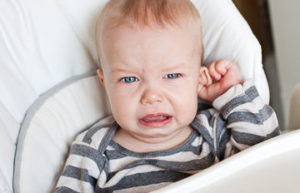 Is your 6 month old typically a good sleeper but woke up crying in the middle of the night? Has your toddler been congested for over a week and woke up this morning with a 101 fever? Or did your five year old mention that “my ear hurts?” These are all signs of a possible ear infection.
Is your 6 month old typically a good sleeper but woke up crying in the middle of the night? Has your toddler been congested for over a week and woke up this morning with a 101 fever? Or did your five year old mention that “my ear hurts?” These are all signs of a possible ear infection.
What is a Middle Ear Infection?
Middle ear infections are one of the most common childhood problems. Let’s start by talking about infections. An infection happens when germs like bacteria and viruses get inside the body and cause trouble. Germs can get into your ears. The ear is divided into three parts: outer, middle, and inner.
The middle ear is a small pocket of air behind the eardrum. You have a middle ear infection when germs get into the middle ear and the area fills up with fluid (or pus), which contains germ-fighting cells. When the pus builds up, your ear starts to feel like a balloon that is ready to pop. If it is a bacterial infection, then antibiotics are needed to treat the infection. More than 50% of ear infections are caused by viruses and do not require antibiotic treatment. Your child’s doctor will determine whether it’s a bacterial or viral infection.
How Do You Know if Your Child Has an Ear Infection?
Unfortunately, you may not know. If your child has a cold lasting less than two weeks, then he is probably fine and does not need antibiotics. The following are symptoms of an ear infection that do need to be treated. First is pain. Children experience pain and pressure from the fluid accumulation. If they are babies and pulling on their ears, this is not exclusively a sign of ear infection as babies tend to pull on their ears for no reason. However, if they are not sleeping well or complaining of pain, that is probably a good sign of ear infection. Second is fever. Many children do have fevers with ear infections and this may be a good indication you need to see a doctor. Third is congestion and cold. Fluid builds up and the drainage system of the Eustachian tube is not properly functioning. If your child is fussy or has a fever after a cold, it may be from an an ear infection. The fourth is ear drainage. When you see drainage of fluid from your child’s ear, then the eardrum may have ruptured from the pressure. After a rupture, your child will probably experience relief since there is less pain. Small ruptures of the eardrum heal well; however, the infection does need to be treated.
Symptoms of a possible ear infection:
- Fever
- Pain in the ear
- Vomiting and diarrhea (in infants only)
- Difficulty hearing
- Crying/pain when sucking
- Loss of sleep or appetite
How Can We Prevent Ear Infection?
Some children are more prone to ear infection due to their anatomy. These children will get ear infections despite our best efforts to keep them germ free. If your child has multiple ear infections in a year (usually 5 or 6) then your child’s doctor may recommend Myringotomy or PE tubes to prevent recurrent infections. For those not anatomically prone to ear infections, there are several things you can do to help prevent your child from getting ear infections.
- When possible, keep kids away from others with colds, flu, or sore throats.
- Try not to let infants and toddlers share toys that they put in their mouth.
- Keep babies from lying down with a bottle — liquid can pool inside the Eustachian tube, allowing bacteria to grow.
- Teach your child to cough or sneeze into a tissue or the crook of the elbow.
- Insist that children and caregivers wash hands often.
- When practical, look for smaller daycare settings. Doctors say that groups of fewer than seven kids tend to have fewer infections.
- As always, make sure your child drinks plenty of fluids and gets adequate rest.
- Breastfeed for at least 3 months. Several studies have confirmed that breastfeeding may help protect a baby from illness due to the immune-boosting components of breast milk.
- Limit pacifiers. A study found that babies who didn’t use pacifiers had one-third fewer middle ear infections. If your baby loves his, try giving it only at naptime and bedtime.
- Steer clear of secondhand smoke. Kids who are exposed to cigarette smoke get more ear infections; it irritates mucous membranes and damages tiny hairs in the middle ear.
- Stay up-to-date with vaccines.
- Use nasal saline in each nostril to prevent fluid from building up.
- Run a humidifier in your child’s room to help with congestion.
If you suspect your child has an ear infection, give our office a call. We will be more than happy to discuss a solution with you.
Contact Us (859-525-8181) if you have any questions!
—
 About Pediatrics of Florence
About Pediatrics of Florence
We believe that children are more than just “little adults.” They have unique personalities, challenges, and life circumstances and we have made every effort to make our offices and care as “kid friendly” as possible. We have an aquatic theme in the waiting rooms (separated for sick and well children) as well as themed examination rooms. All of our physicians are Board Certified Pediatricians and members of the American Academy of Pediatrics and our nurse practitioners are all licensed Pediatric Nurse Practitioners and are available to see both well and sick children.
